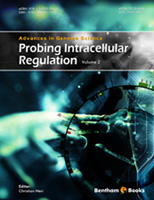
Photo from archive.org
In the current research landscape, microbiota composition studies are of extreme interest, since it has been widely shown that resident microorganisms affect and shape the ecological niche they inhabit. This… Click to show full abstract
In the current research landscape, microbiota composition studies are of extreme interest, since it has been widely shown that resident microorganisms affect and shape the ecological niche they inhabit. This complex micro-world is characterized by different types of interactions. Understanding these relationships provides a useful tool for decoding the causes and effects of communities’ organization. Next-Generation Sequencing technologies allow to reconstruct the internal composition of the whole microbial community present in a sample. Sequencing data can then be investigated through statistical and computational method coming from network theory to infer the network of interactions among microbial species. Since there are several network inference approaches in the literature, in this paper we tried to shed light on their main characteristics and challenges, providing a useful tool not only to those interested in using the methods, but also to those who want to develop new ones. In addition, we focused on the frameworks used to produce synthetic data, starting from the simulation of network structures up to their integration with abundance models, with the aim of clarifying the key points of the entire generative process.
Journal Title: Current Genomics
Year Published: 2020
Link to full text (if available)
Share on Social Media: Sign Up to like & get
recommendations!